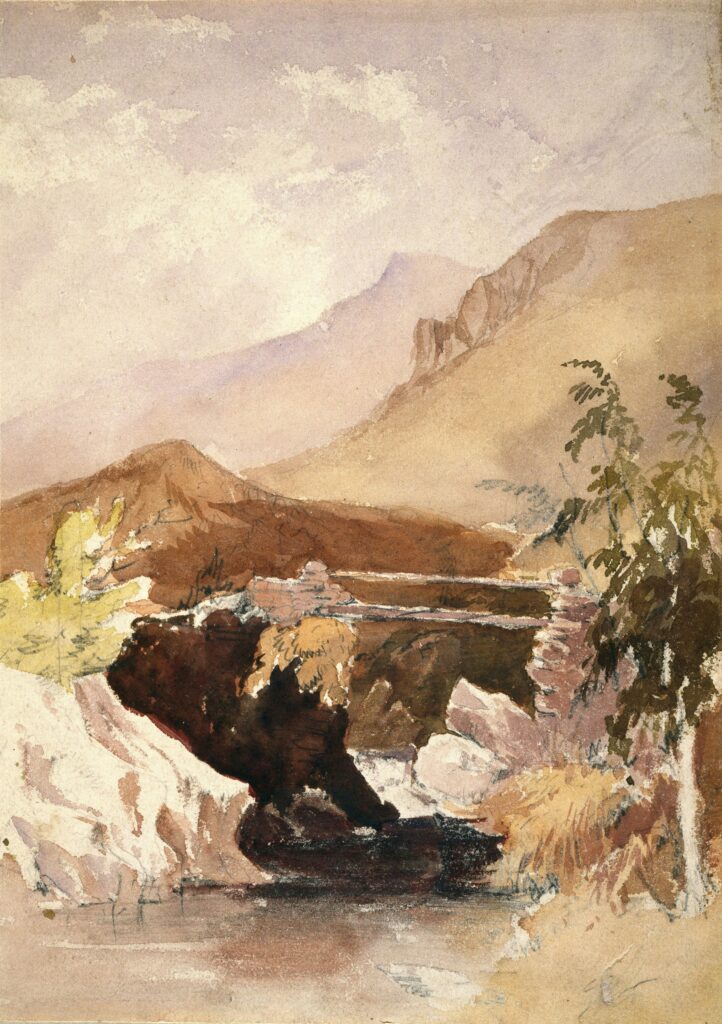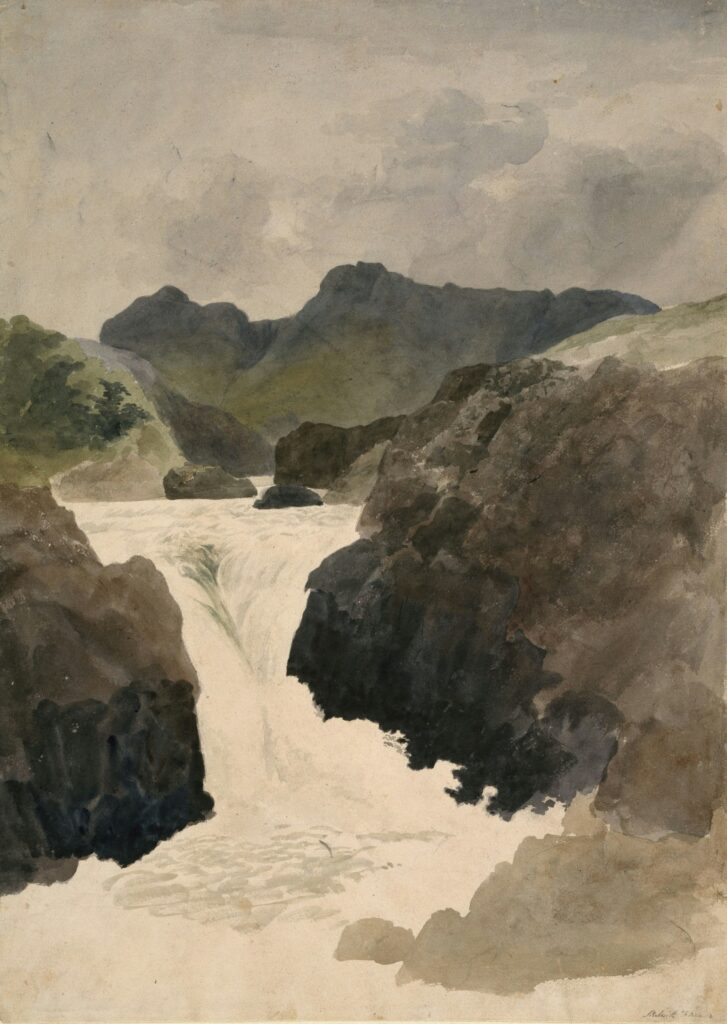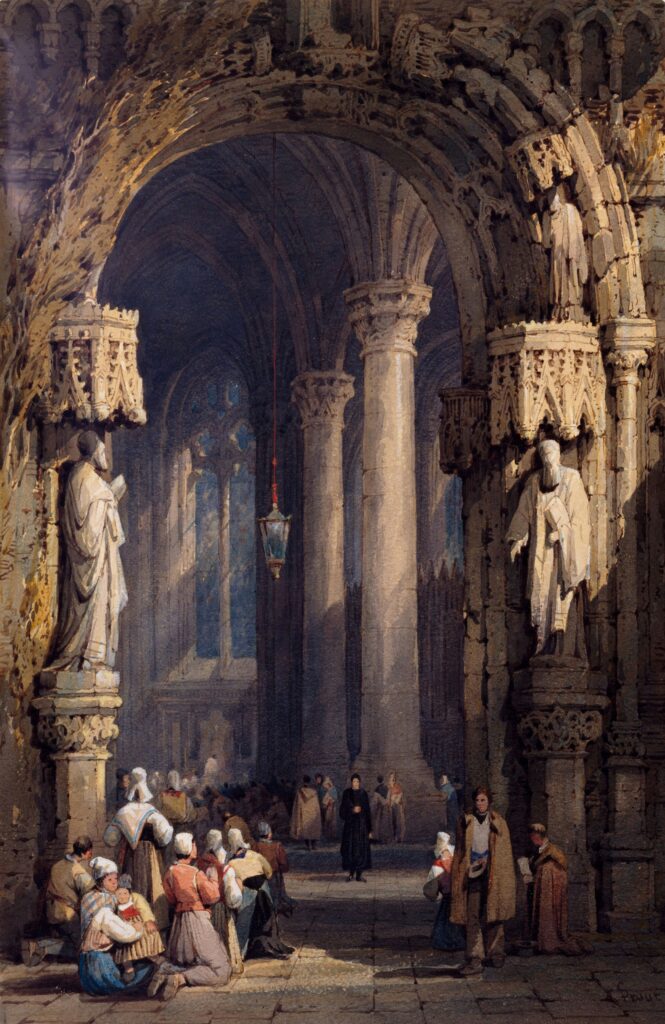The article explores the work of British painter Harold Cohen and his image-generating robot, AARON. Unlike other A.I. programs, AARON is not just a gimmick; it is a tool that Cohen used to create interesting and sophisticated art. The paintings made with AARON range from abstract linework to portraits in furnished interiors, progressing over the years to include human figures, objects, and lush vegetation. Cohen’s collaboration with AARON showcases the potential of A.I. as a creative tool in the world of art.

Introduction
Artificial intelligence (A.I.) has become a buzzword in the art world, with many artists and technologists exploring its potential to create unique and interesting artwork. However, amidst the sea of A.I.-generated art, there is one software that stands apart from the rest. AARON, developed by the British painter Harold Cohen, is not just a gimmick but a powerful tool that has revolutionized the field of A.I.-generated art. This article will delve into the background of AARON and Harold Cohen, exploring how AARON has evolved over time and its impact on the art world.
Background on AARON and Harold Cohen
AARON as a tool, not just a gimmick
Unlike many A.I. systems that simply generate random art, AARON was designed by Harold Cohen to be a true collaborative partner. Cohen recognized that A.I. is only as good as its user and thus created AARON as a tool to assist and enhance his own artistic abilities. AARON was not meant to replace the artist, but rather to augment their creative process and push the boundaries of what was possible in art creation.
Evolution of AARON’s style and capabilities
AARON’s style and capabilities have evolved significantly over time. In its early days, AARON was limited to producing abstract, wavering linework and basic shapes and colors. However, as computing power increased, so did AARON’s range. Cohen continuously worked on expanding AARON’s abilities, introducing human figures, objects, and eventually even recognizable interiors to its repertoire. AARON’s style became more sophisticated and its compositions more complex, showcasing the potential of A.I. in the art world.
Cohen’s background as a painter
Before diving into the world of programming and A.I., Harold Cohen was an accomplished painter in his own right. His canvases, featuring noodly, tractlike shapes, were exhibited in major exhibitions, including the Venice Biennale and Documenta. Cohen’s expertise as a painter played a crucial role in shaping AARON’s artistic capabilities and aesthetic sensibilities.

Early Works of AARON
Abstract, wavering linework
In its early iterations, AARON was limited by the available computing power, leading to abstract, wavering linework as its primary form of expression. The robotic plotter and pen used by AARON produced delicate, fluid lines that evoked a sense of movement and spontaneity.
Limited to basic shapes and colors
Due to the constraints of early computing technology, AARON’s palette was initially limited to basic shapes and colors. However, this limitation did not deter Cohen from creating visually striking compositions. He manually added patches of blushy, acid color to AARON’s works, showcasing his nuanced understanding of color theory.
Cohen’s manual additions of color
To further enhance AARON’s early works, Harold Cohen would manually add color to the compositions. This manual intervention allowed Cohen to inject a personal touch into AARON’s creations, blurring the boundaries between man and machine.
Expansion of AARON’s Range
Inclusion of human figures and objects
As computing power advanced, so did AARON’s capabilities. Cohen worked tirelessly to expand AARON’s range, introducing human figures and recognizable objects into its compositions. This expansion allowed AARON to move beyond abstract linework and engage with more complex subjects.
Introduction of leafy plants and foliage
One notable milestone in AARON’s evolution was the introduction of leafy plants and foliage into its compositions. The addition of natural elements brought a new level of complexity and realism to AARON’s works, capturing the intricacies of nature in a way that was previously unimaginable for an A.I.-generated artwork.
Ability to compose recognizable interiors
Perhaps one of the most impressive advancements in AARON’s capabilities was its ability to compose recognizable interiors. By the mid-2000s, AARON could create compositions featuring furnished interiors, complete with tables, flowerpots, and other objects. This level of detail and realism showcased AARON’s growth as an artistic tool.

Cascades of Jagged Leaves
Crayon-hued jungles in real time
The mid-2000s saw a significant leap in AARON’s artistic abilities. The software from 2007 could generate compositions featuring cascades of jagged leaves in real time. These images resembled crayon-hued jungles, showcasing AARON’s ability to create vibrant and visually captivating scenes.
2007 software version showcased at the Whitney
The artistic capabilities of AARON were showcased at the Whitney Museum in 2007, where the software’s 2007 version was projected, displaying its real-time generation of crayon-hued jungles. This exhibition drew attention to AARON’s unique artistic contributions and its potential as a tool for artists.
Projection of AARON’s artistic capabilities
The exhibition at the Whitney Museum projected AARON’s artistic capabilities to a wider audience, demonstrating that A.I. can be more than just a gimmick. AARON’s ability to create visually stunning compositions in real time highlighted the potential of A.I.-generated art and paved the way for further exploration in the field.
Highlights from Cohen and AARON’s Collaboration
Bathers Series inspired by Cézanne
One of the highlights of Harold Cohen and AARON’s collaboration was the “Bathers Series” inspired by the works of Paul Cézanne. This series featured round warbling lines, AARON’s signature, inscribing swooshing figures painted in vibrant colors. The paintings exuded a sense of fecund joy, capturing the essence of Cézanne’s Impressionist tableaus while incorporating AARON’s unique style.
Use of AARON’s signature lines and colors
Throughout their collaboration, Harold Cohen embraced and incorporated AARON’s signature lines and colors into his own artistic practice. AARON’s distinct visual language became an integral part of Cohen’s artistic repertoire, allowing him to create works that married the strengths of both man and machine.
Fecund joy in the artwork
One recurring theme in Cohen and AARON’s artwork is the sense of fecund joy that permeates each composition. Whether it’s the vibrant colors or the lively lines, Cohen and AARON were able to capture a sense of vitality and exuberance in their collaborations, showcasing the unique possibilities that arise when human creativity meets artificial intelligence.
Cohen’s Transition from Painter to Programmer
Cohen’s career as a painter before AARON
Before delving into the world of programming and A.I., Harold Cohen had already established himself as a successful painter. His works, characterized by noodly, tractlike shapes, were exhibited in prestigious exhibitions such as the Venice Biennale and Documenta. Cohen’s transition from a painter to a programmer marked a significant shift in his artistic journey.
Influence of Silicon Valley and defense industry
In the late 1960s, Cohen found himself in the midst of a nascent Silicon Valley and the burgeoning defense industry while teaching at the University of California, San Diego. The proximity to these technological hubs and the exposure to cutting-edge developments influenced Cohen’s interest in robotic drawing and A.I., eventually leading him to develop AARON.
Experiments with robotic drawing and early exhibitions
Cohen’s interest in robotic drawing and A.I. led him to experiment with early iterations of AARON. He exhibited these initial experiments in 1972, laying the foundation for the development of AARON as an artistic tool. Cohen’s early exhibitions provided a glimpse into the possibilities of A.I.-generated art and foreshadowed the groundbreaking work to come.
AARON’s Legacy
Cohen’s continued work on AARON until his death
Harold Cohen’s dedication to AARON was unwavering, even until his death in 2016. He continued to refine and enhance AARON’s capabilities, pushing the boundaries of what was possible in A.I.-generated art. Cohen’s commitment to his collaboration with AARON ensured its longevity and established it as a significant contribution to the field.
Impact and influence of AARON in the art world
AARON’s impact on the art world cannot be overstated. It challenged the notion of A.I. as a mere gimmick and showcased its potential as a powerful tool for artists. AARON’s ability to generate unique and visually stunning artwork opened up new possibilities for artistic expression, sparking a broader conversation about the intersection of art and technology.
Contributions to the field of AI-generated art
AARON’s contributions to the field of AI-generated art are immeasurable. It paved the way for further exploration and experimentation, inspiring countless artists and technologists to push the boundaries of what is possible in art creation. AARON’s fusion of human creativity and artificial intelligence created a new paradigm in the art world, challenging traditional notions of authorship and inviting new perspectives on artistic collaboration.
Conclusion: A.I. Art Beyond Gimmicks
AARON’s journey from a simple A.I.-based program to a powerful tool for artistic expression demonstrates that A.I. can be more than just a gimmick. Harold Cohen’s collaboration with AARON exemplifies the potential of A.I. as a tool for artists, offering new avenues for creative exploration and expanding the boundaries of what is considered art.
Exploring the potential of A.I. in art creation opens up a world of possibilities. By embracing A.I. as a tool, artists can tap into its computational capabilities and use it to augment their own creative processes. A.I. has the potential to push artistic boundaries, challenge preconceived notions, and offer fresh perspectives.
In appreciating AARON’s unique artistic contributions, we recognize the importance of embracing A.I. as a collaborator rather than a replacement for human creativity. The fusion of human and machine offers exciting opportunities for artistic innovation and exploration. AARON’s legacy stands as a testament to the transformative power of A.I. in the world of art.

